| |
|

NOW-SUNDAY, SEPTEMBER 7

FRIDAY, SEPTEMBER 12, 2008 Temple Solel S'more Shabbat

___________________________________________________________________
MON., SEPT. 29-THURS., OCT. 9


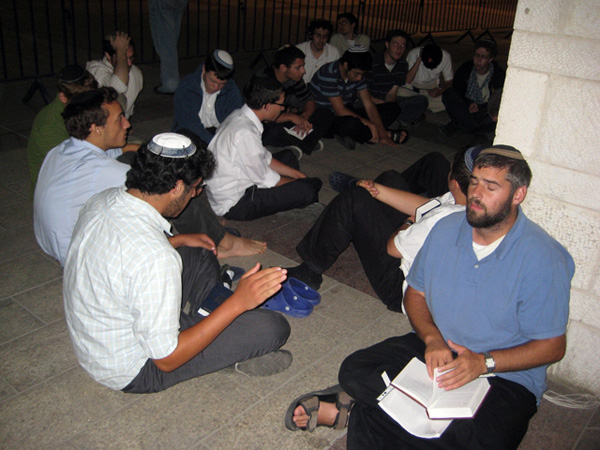
JERUSALEM DIARIES
A Tisha B'Av hike around the Old City
By Judy Lash Balint
 JERUSALEM—“Up there the Jordanians had their soldiers stationed…” “When mashiach will come, it will be through that gate over there…” “Saba (grandpa) fought here in the Six Day War." Snippets of conversation overheard in a hands-on outdoor classroom as parents walk with their children around the outside of the walls of Jerusalem’s Old City to mark the beginning of Tisha B’Av. JERUSALEM—“Up there the Jordanians had their soldiers stationed…” “When mashiach will come, it will be through that gate over there…” “Saba (grandpa) fought here in the Six Day War." Snippets of conversation overheard in a hands-on outdoor classroom as parents walk with their children around the outside of the walls of Jerusalem’s Old City to mark the beginning of Tisha B’Av.
Saturday evening, August 9, thousands took part in the revival of the tradition of walking around the walls. This year marks the 14th anniversary of the revival of the Tisha B’Av custom, initiated by the Women In Green organization headed by Nadia and Ruth Matar.
A gentle breeze blows through the concrete canyon created by the buildings that make up Jerusalem's municipal complex, Safra Square. The wind ruffles the sackcloth garment worn by a middle-aged man sitting alone on the hard ground in the square as Tisha B'Av descends on Jerusalem.
Along with hundreds of others, he's there to mourn the long litany of national tragedies that has befallen the Jewish people around this date all through Jewish history. While Yom Kippur is the day for personal reckoning, Tisha B'Av is the occasion for some national soul-searching over what led to our various ancient and recent disasters.
As we sit waiting for the start of the recitation of Eichah, the mournful lament for his people penned by the prophet Jeremiah, we remember Tisha B'Av 2006, when many of us here tonight spent part of that day at the heartrending funeral of IDF soldier Michael Levin z"tl, a young American immigrant killed in the Second Lebanon War.
There were civilian casualties too during that dreadful Tisha B'Av two short years ago. Five people were killed by rockets fired into Israeli towns on that day. Shimon Zribi, his 15-year-old daughter Mazal, Albert Ben-Abu, and Aryeh and Tiran Tamam all perished in Akko.
Tisha B'Av is the one day of the year when Jewish prayers are broadcast over a public address system, in contrast to the daily Moslem call to prayer blasted out five times a day over amplification systems from the mosques in eastern Jerusalem. It's actually a little disorienting to hear the Hebrew of Eichah amplified over the main city square.
As the marchers move off following a huge banner proclaiming a slogan of allegiance to Jerusalem, organizer Nadia Matar reminds the crowd that this is not a demonstration or a rally, nor is it a social event. In fact, no reminder is necessary, as the restrained mass of Jews soberly sets out to encircle the gates of the Holy City. It's difficult to estimate the crowds, but it takes a while for the masses to move out of Safra Square at the beginning of Jaffa Road and set off on their way after the public reading of Eichah.
Scattered amongst the marchers are a significant number of non-observant Israelis. Women wearing pants walk side by side with others whose hair is carefully covered with a scarf or hat.
There are wheelchair "marchers" and a number of octogenarian walkers, some supported by younger relatives, who all manage to reach the end of the hour-long route.
As we pass New Gate, the main entry to the Christian Quarter, we see that all traffic on Route #1 (the main north/south gateway through the city) has been halted by a bus blocking the main road as we take over the streets and pour down the road toward Damascus Gate. Spotlights and snipers are dotted on the rooftops and although most of the Arab stores are shuttered tight, soldiers keep a tight watch over several dozen Arabs who watch us march by as we pass Saleh el Din Street, the main commercial avenue of eastern Jerusalem. Border police hold back a few Arabs coming out of Herod's Gate as we stream past.
Walking down the hill toward Damascus Gate we turn to look back at those behind us. People as far back as we can see.
We stop in front of Lions Gate, where Israeli paratroopers entered to liberate the Temple Mount in the 1967 Six Day War. Rabbi Yisrael Ariel, head of the Temple Institute, tells us, “I’m full of shame.” He recounts how he had approached the gate a few minutes earlier and was threatened by a couple of young Arabs. Rav Ariel sought help from the police standing around and was told, “What are you doing at Lions Gate?” “I was here with Motta Gur’s paratroopers 41 years ago and no one asked us then what we were doing here!” Rav Ariel exclaims.
Knesset member Aryeh Eldad and former Knesset member Elyakim Haetzni both recall the Lebanon War as well as the previous summer's tragic expulsion of Jews from Gush Katif that occurred on the day after Tisha B’Av 2005. Both resulted from weakness. “We have a corrupt government that is a failure—now they’re freeing more terrorists,” Eldad continues. MK Eldad tells marchers that the people are stronger than the leaders and exhorts the people to “send a message from here. Gush Katif, Amona—we won’t let it happen again.”
Rabbi Yosef Mendelevich, former Prisoner of Zion and one of Israel's most unsung heroes, explains that he feels compelled to say Kaddish at this spot just outside the Temple Mount "for the heroes who fell here." He turns to face the site of the Temple and the thousands of marchers who had listened quietly to the speeches rise behind him to gaze up at Lions Gate and join in the response to his passionate rendition of the ancient words of praise and hope.
In front of us we see the Mount of Olives crowned with its Arab and Christian institutions. There's a refreshing feeling of freedom as thousands walk freely down the road that overlooks the oldest Jewish cemetery in the world.
Many marchers wander over to the wall to gaze at the Kidron Valley below with Absalom's Tomb and the monument to the prophet Zechariah. Across the valley we can see the Maale Hazeitim development that acts as a buffer between Abu Dis and the Temple Mount.
Rounding the corner, we look up at the imposing Southern Wall of the Temple with the steps and Huldah's Gate, before making the ascent towards Dung Gate and the entrance to the Western Wall.
"Look over there," says a young mother to her wide-eyed daughter. "You can see the stairs where the Jews used to go up to the Temple," she says as we walk up the hill in front of the southern wall.
Glancing backwards again, the sight of the crowds of people still behind us is awesome. Quiet and dignified, the march has once again gone off without incident.
Getting out of the area proves challenging, as, for some reason this year the Egged bus company decided not to lay on the constant line of buses that usually shuttle the throngs back and forth to Dung Gate, the closest exit to the Kotel. Well after midnight, hundreds of us are hiking up the road to Mt Zion and then down towards Sultan’s Pool. Dozens of other pedestrians are making their way in the darkness down the snake path from the top of Mt Zion, and we all end up walking along Hebron Road, which is packed with traffic in both directions as if it were daytime rush hour.
Well after midnight I see the man in sackcloth reading Lamentations as he’s stretched out on a concrete ledge inside the tunnel that links the Kotel plaza to the Moslem Quarter. He's no longer alone.


REFLECTIONS
Beijing Olympics - YEA! Well, maybe not….
By Sheila Orysiek
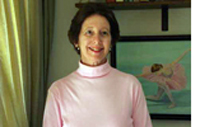 SAN DIEGO—As the opening ceremonies for the Olympics were about to begin, instead of watching I chose to spend my time writing about a documentary shown on CNN a couple of years ago. It began with a bus load of American couples who had come to China to pick up an infant they had each adopted sight unseen; it was enough that it was a child they could take home and love. Most of them had spent years and thousands of dollars trying to create a child of their own and then spent thousands more - approximately $25,000 (as I recall) - to complete the adoption process. And now, here they were in a land far away from home, to take possession of another being - an infant. SAN DIEGO—As the opening ceremonies for the Olympics were about to begin, instead of watching I chose to spend my time writing about a documentary shown on CNN a couple of years ago. It began with a bus load of American couples who had come to China to pick up an infant they had each adopted sight unseen; it was enough that it was a child they could take home and love. Most of them had spent years and thousands of dollars trying to create a child of their own and then spent thousands more - approximately $25,000 (as I recall) - to complete the adoption process. And now, here they were in a land far away from home, to take possession of another being - an infant.
The new parents were not given a choice in selecting a specific baby. This included no choice in gender because there was only one gender available: female. All the cribs were lined up row after row, room after room - an entire orphanage - one of many orphanages - all filled with little girls – infants to toddlers; several in each crib. And these were the lucky ones - they hadn’t been aborted or left to die in the woods, or thrown into a river or buried alive. Sadly, female infanticide is not new in China. But now that each family is only allowed to have one child, they often choose to keep the boys while abandoning or murdering the girls both before and after birth.
The infants being adopted by the Americans, each wrapped in a blanket, lay in a long row and a caretaker simply picked one up and gave it to the next set of parents who were also lined up. The picture of the American parents receiving an infant, cradling the baby, faces already alight with love, was a graphic illustration of the contrast between a society which values life - even female life - and one in which life is cheap and females are regarded as worthless. Though rejected by their birth families, these were doubly lucky infants; most abandoned girls grow up languishing in orphanages.
One American couple was told that their new daughter had been left at the foot of a tree in an urban park in Beijing with a card on which was written the baby’s name. These new parents wanted to raise the child as an American but with an understanding of her ancient Chinese heritage. An interpreter took them to the tree under which the child had been left. A sign in Chinese was posted on the tree detailing the baby’s short history and asking if anyone knew about the child’s family.
Chinese passersby stopped, read the sign and lingered to see what would happen. What happened next was totally unforeseen. A young man read the sign and looked at the tiny Chinese baby the American mother was lovingly holding and then turned to the crowd of people watching. Loudly, he began to berate them. With tears rolling down his cheeks he cried: “How can we do this to our infants? Why do we throw out little girls? What kind of society does this? Why does it take foreigners to come here to rescue our babies? Why don’t we rescue our own children? We should be ashamed that foreigners come from so far away to take the children we throw out! Why? Shame! Shame! Shame!”
The onlookers listened and then turned away in shame. The documentary continued with a visit to a grade school in which the principal pointed out the demographic disparity; the school children were overwhelmingly male. This poses a problem for the future as the boys mature and seek to establish households. At first the government thought that the scarcity of women would make them a more precious commodity. Unfortunately, this has not been the result. Instead of increasing their value, men are kidnapping women from one another and then holding the women against their will forcing them to have children - boys.
This, however, is not the full extent of China’s shame. I read an article not long ago in which the Dalai Lama was meeting with Jewish leaders and asking their advice on how to keep alive a people and a culture living in Diaspora. He knew that Jews had with varying success managed this for more than 2000 years.
Tibet is no threat to China. Tibet wants nothing from China. Tibet is not a country with resources such as fuel, or a port, or wealth, or extensive farmland. It’s an insular country bound up in its mountains and its own form of Buddhism, with a definite culture of its own. And, yet, China covets Tibet and has brought in thousands of Chinese to overwhelm the native population. It persecutes the monks and forced the Dalai Lama to flee in 1959 when he protested. Slowly, Tibet as a recognizable culture is disappearing.
China also has a fair number of Christian communities which it is forcing into government approved “patriotic” churches and government appointed clergy. China restricts access to the Internet. China practices forced abortions and sterilization. Some of the venues built for the Olympics were at the expense of poor families who were forced from their homes. This, too, is not new in China - the government has a history of displacing people who are in the way of what the government wants to do.
In 2004 I reviewed a book (for a dance site) called Mao’s Last Dancer by Li Cunxin. He recounts his childhood, of a loving close family living in terribly poor conditions. A delegation from Beijing came looking for candidates for the ballet school. They especially sought young children in the impoverished rural villages where the parents were helpless to protest and at the same time anxious for the child to be chosen which would improve the family’s political profile.
To test the children’s potential for ballet training, they were lined up in their underwear (or naked for those who had no underwear) in front of the committee and their bodies were twisted and stretched: legs were pulled up beside ears or forced into splits without any previous training, stretching or preparation. Several of the children were injured and tossed aside. People are expendable in China.
Cunxin says on that first day his hamstrings were badly injured but he was told to pretend it didn’t hurt so he would not be rejected. He was only eleven years old when he was taken from his family to Beijing where he lived in a dormitory, every moment of his life regulated - then and for the future. His description of the training is horrific such as being forced to dance in the snow without proper clothing to “toughen up.” Cold muscles are easily injured - ballet companies in the United States stipulate a temperature below which the dancers will not perform. Eventually he was able to get away and landed in America where he danced until he retired.
This kind of forced training is not an isolated event. The people in the various sports, arts, acrobatics, gymnastics, etc., who so amaze us when we see them, have paid a high price; a price about which they often had no choice. Some are forced into training at age four and any complaint brings shame and retribution on their families. This is something to keep in mind while watching China’s athletes and artists.
When South Africa mistreated its black population, it faced worldwide condemnation and was banned from participating in the Olympics. Why doesn’t that apply to China in how it treats its infant girls? Why doesn’t it matter that many of the athletes have had no choice in what they are doing? Why is the suppression of an entire people - Tibet - unimportant? Why isn’t the suppression of religion - Christianity - important? Why isn’t China condemned for its complicity in the Darfur genocide? China has actively blocked sanctions against Iran in the effort to curb its nuclear program. The Olympics is a gift to the country selected to host it. Why is China being rewarded for its actions?
I am told that the opening ceremonies were spectacular. Well, silly me, I’m not even tempted. Instead I’m thinking of an unwanted infant left at the foot of a tree and the Chinese man who cried: “Shame! Shame!”
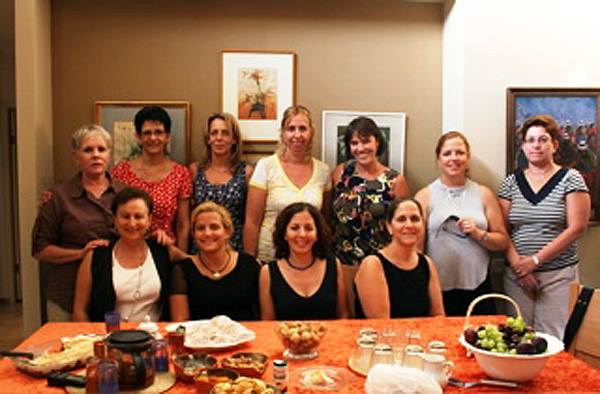
FROM THE GATES OF THE NEGEV
San Diego mission to Sha'ar Hanegev focuses on educational issues, cooperation
By Ulla Hadar
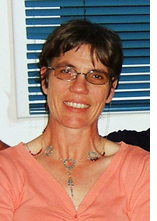 KIBBUTZ RUHAMA, Israel—Nearly a month has elapsed since four top-ranking women from San Diego’s United Jewish Federation extensively toured the Sha’ar Hanegev region, with which UJF has a partnership relationship. But, even today, women of Sha’ar Hanegev who met with their San Diego counterparts, say they feel a warm afterglow from the meetings which may deepen avenues of cooperation between the two areas. KIBBUTZ RUHAMA, Israel—Nearly a month has elapsed since four top-ranking women from San Diego’s United Jewish Federation extensively toured the Sha’ar Hanegev region, with which UJF has a partnership relationship. But, even today, women of Sha’ar Hanegev who met with their San Diego counterparts, say they feel a warm afterglow from the meetings which may deepen avenues of cooperation between the two areas.
The UJF visitors to Sha’ar Hanegev on July 21 were Lisa Haney, planning and allocation director; Debbie Kempinsky, women's division director; Theresa Dupuis, women's division campaign chair, and Miriam Norton Robbins, annual campaign director.
The women's delegation arrived at Sha’ar Hanegev during a time when many security issues—particularly the chance of rocket fire from across the Gaza border—were unsettling the area. The support expressed by the women from San Diego reassured the inhabitants here that they are not alone and emphasized that "all Jews are responsible for each other,” according to Varda Goldstein, director of resource development for Sha’ar Hanegev.
"We had an exceptional chance to show the women our life here,” Goldstein said recently. “They got the opportunity to meet and talk with people that every day have to cope with a life of ‘routine under continuous emergency.’"
The visit started at the Ibim Student Village where Sony Zinger, director, explained to the visitors some of the difficulties the Ibim Village students have to live with when arriving in Israel as immigrants with no family to support them. On top of the security situation, they
have to deal with a new language, a new culture and studies at nearby Sapir College. The studies, although difficult, help them integrate into society and give them a chance of making a living in their future lives.
Respects were paid by the UJF delegation to Marla Bennett, may her soul rest in
peace, at the memorial site made in her honor situated in the village. Bennett, a San Diegan, was among the students murdered by the terrorist bombing in 2003 of the cafeteria at Hebrew University.
Aharale Rothstein, director of the high school in Sha’ar Hanegev, greeted the guests and briefed them on the plans for the new planned High Tech High school. "The education system of Sha’ar Hanegev is the anchor for a continuous and stable life. We need to be the best so that no pupil will leave this area," Rothstein told the women.
Dr. Ruth Eitan and Dr Ariel Feldstein, both from the faculty board of the Sapir College, explored with the visitors possible ways to create connections between the Sapir College and students from San Diego.
On went the tour to Kibbutz Nahal Oz, where one can find "the eyes of the area" as the women soldiers at the Israel Army base there are called. These young women work shifts around the clock on their computers. 24 hours a day scanning and monitoring the area for terrorists, illegal intruders or other suspicious activities. The delegation had a good
opportunity to understand what the work is all about and how important these young female soldiers are for the IDF.
Later, over a cup of coffee, the four UJF women sat down in Goldstein’s private home in Kibbutz Kfar Aza, where they were joined by another seven women professionals from
the Sha’ar Hanegev area. Every day they have to cope with a responsible job, a family and a difficult security situation. These women each told their stories, sharing their problems, joys and the uniqueness of their job position.
In the open and friendly way characterizing how women can talk to each other,
they made a warm and emotional impression on the visitors from San Diego, according to Goldstein.
The day was concluded with a meeting with Alon Schuster, mayor of Sha’ar Hanegev, in his office at the municipality. He arrived straight from his army reserve duty to talk with the San Diegans.


.jpg)

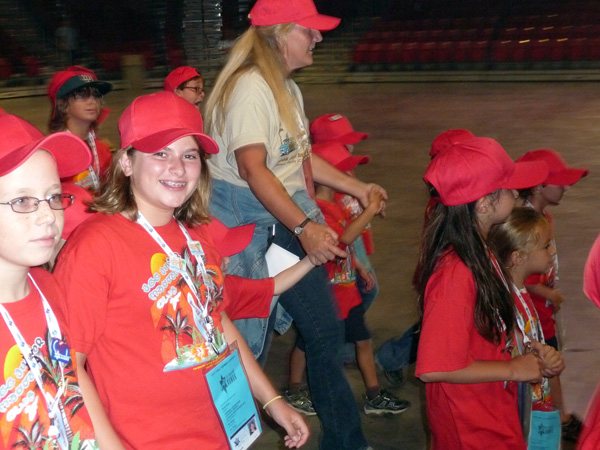
THE JEWISH GROTTO
Reflections on the JCC Maccabi Games
By Gary Rotto
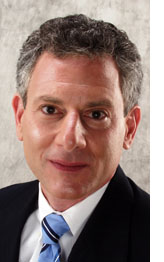 LA JOLLA, California—As JCC Executive Director Michael Cohen and I stood on the field of the Lawrence Family JCClast Sunday awaiting our guests, we talked about the old Holiday Hoopla program – a program that was held over Presidents Day Weekend. It’s incredible to look back to 30 years ago, when the old 54th Street JCC hosted four other western region JCCs in a boys basketball and co-ed volleyball tournament. I had the pleasure of participating on both teams as a member of the El Paso “delegation." It was my first visit to San Diego -and I met Cohen then when he was serving as JCC Phys Ed Director. And I realized that David Wax, currently the JCC President, was on that San Diego basketball team! Perhaps 80, maybe 90, kids were involved. LA JOLLA, California—As JCC Executive Director Michael Cohen and I stood on the field of the Lawrence Family JCClast Sunday awaiting our guests, we talked about the old Holiday Hoopla program – a program that was held over Presidents Day Weekend. It’s incredible to look back to 30 years ago, when the old 54th Street JCC hosted four other western region JCCs in a boys basketball and co-ed volleyball tournament. I had the pleasure of participating on both teams as a member of the El Paso “delegation." It was my first visit to San Diego -and I met Cohen then when he was serving as JCC Phys Ed Director. And I realized that David Wax, currently the JCC President, was on that San Diego basketball team! Perhaps 80, maybe 90, kids were involved.
It is absolutely amazing that the event has evolved to one that included over 1,350 players representing 40 Jewish communities (and an additional 2 country delegations) in 11 sports. It was a feat to recruit and train 350 local athletes and participants as well 600 host families and volunteers. It was dedication for many JCC office staff to willingly step out of their roles and staff venues and become the glue of Maccabi Central, Maccabi Cares and other important components of the week.
Huge thanks go out to key JCC staff members Mike Cohen, Nate Stein, Cynthia Salling, Norma Lunney, Dan Wagner, Gilad Hoffman, Heather Barbash, Dan Shapiro and many other JCC staff members. Co-chairs David Geffen, Gary Jacobs, and Ruthie Warburg all seemed to live at the JCC for the past few weeks as just as importantly provided vision and leadership for this great endeavor.
Sure there were little glitches along the way: But everyone did get the air mattresses needed as well as the pumps through some clear thinking by JCC staff to solve this and other problems that arose. Most importantly, every child did get picked up in the evening and returned the next morning on time for their events. Every injury was tended to and the medical staff was thorough in its work. Ok, we ran out of PowerAde at the Girls Basketball venue, but the girls had plenty of water! The delegation signs were well posted at the evening pick up points and I found my kids pretty quickly. (I think that any delay was due to my socializing with the other host families comparing notes about our guests.) Overall, everything ran very, very well.
From the playing venues and the special event venues many key comments were heard. The Stamford, Connecticut, Basketball coach said that this was the best, most professional group of referees that he has ever worked with in any JCC Maccabi Games. “Please thank your community for doing this!” said Stuart Greene, the Health and PE director who served as the delegation head for the Springfield, Massachusetts, group about the night at Sea World. His eyes may have been as wide as those of the boys and girls in his delegation. “The kids don’t have anything like this where we are from. We really appreciate it.” Ok, the reports of the food on the Midway led me to stop at a drive-thru for the boys on the way home, but they are teenage boys and my, can they eat!
My daughter Kelila was thrilled to walk out on the Cox Arena floor as a member of the Junior Maccabi delegation. Those kids were so cute and enthusiastic – their chants of “San-Di-E-Go” rung through the crowd as the San Diego delegation came into the venue. I still get goosebumps reliving the sounds and sights from that moment. It was a great idea implementing the Junior Maccabi program. (Next up for the Junior Maccabi program: a one-day tournament against other JCCs in March!)
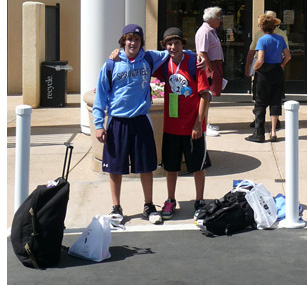 I had the pleasure, truly a pleasure, of hosting two young men from Springfield, Massachusetts. I think that with the exception of the international delegations, Springfield had the longest trip to San Diego. From the time they met up with their delegation head to the time that they arrived at the field last Sunday, the Springfielders had been traveling for 14 hours. Ben Levenson (shown at left) and Alec Draymore (right) went from exhausted to happy to energized to entertained over the past few days. Ben came to San Diego to play flag football, while Alec participated on the under 16 boys soccer team. I had the pleasure, truly a pleasure, of hosting two young men from Springfield, Massachusetts. I think that with the exception of the international delegations, Springfield had the longest trip to San Diego. From the time they met up with their delegation head to the time that they arrived at the field last Sunday, the Springfielders had been traveling for 14 hours. Ben Levenson (shown at left) and Alec Draymore (right) went from exhausted to happy to energized to entertained over the past few days. Ben came to San Diego to play flag football, while Alec participated on the under 16 boys soccer team.
While “rookies” at the JCC Maccabi Games, Ben and Alec were familiar with the event. “When Springfield hosted the games a few years ago, we had two kids staying at our house,” noted Alec. He doesn’t remember much from that stay other than the kids had fun and he enjoyed having them sleep at his house. “My sister, Alisha, was a swimmer in Orange County last year,” relates Ben about the experience his family had during last year’s games in Irvine. “She influenced my decision to sign up to come to San Diego.”
I asked Alec and Ben if they met players from the other delegations. The boys each met competitors from about 15 delegations during the events, hang time and the evenings out at special venues. “The San Diego and Phoenix kids were cool,” says Ben. The boys had met a couple of the Phoenix football players during our Host Family night at the Chargers practice. “And I had a chance to talk with some of the San Diegans after our matches,” added Alec.
For Ben, the most unexpected part of the stay were the unique evenings at Sea World and aboard the Midway. “Those were amazing trips! I didn’t think they would be that much fun and amazing.”
The JCC worked closely with the San Diego International Sports Council (SPISC) in coordinating this event. While the SDISC would like for San Diego to be in a rotation to host the Super Bowl, I think that San Diego should be on a regular rotation to host the JCC Maccabi Games. You have the structure in place and the experience – and I know many families who wished that they had served as a host family, so our Local Delegation committee should have an easier time recruiting host families next time around.
So what do you say that we do this again in, say, three years? Afterall, we have our air mattresses neatly packed away in our attics or garages just waiting for the call!



THE JEWISH CITIZEN
Enjoying the local fare in Carlsbad
By Donald H. Harrison
 CARLSBAD, California— I firmly believe that food doesn’t have to be expensive to be good; in fact, from my point of view, if it's too expensive, it can't be good. CARLSBAD, California— I firmly believe that food doesn’t have to be expensive to be good; in fact, from my point of view, if it's too expensive, it can't be good.
It’s true that Nancy and I practice a certain level of thriftiness, but my objection to fancy, chic and extremely expensive restaurants isn’t only that I want to save my money. Call it “Jewish guilt,” but the idea that it is possible in a single meal for just one person to run up a bill of over $100, $200 or more (depending on the wine choice) makes me feel terrible. The same amount of money could feed a village in a developing nation where children are suffering from malnutrition and hunger. How dare I, or any of us, have such hubris that we believe stuffing ourselves with such overly expensive foods is not an act of awful, self-important arrogance? Just the idea of such self-indulgent consumption gives me heartburn.
My family knows my feelings on this, so they allow me to choose the restaurant I would like to go for special occasions such as my just-passed 63rd birthday. I tend to favor “experiential” restaurants, where I might sample some new food, perhaps of another ethnicity, and learn something about the area in which we are dining. I dislike chains, and seek out restaurants owned by locals.
Over the weekend, we had fish and chips—a good proletarian meal— at the Harbor Fish Café on Carlsbad Boulevard, overlooking Robert C. Frazee State Beach {video clip}, named for a former Carlsbad mayor and state legislator who I used to cover in my years as a politics writer. Afterwards we walked across Carlsbad Boulevard to the Armenian Café for coffee and Armenian cheese cake, made with a soft cheese and the same kind of filo dough and honey used in baklava. While consuming this delicacy, we were privileged to enjoy a musician playing an electric oud {video clip}, not your everyday experience.
If you added up the fare for my fish and chips, coffee and dessert, it was less than some people pay for appetizers (caviar, for example!) at the fanciest of restaurants. Yet, at each place, Nancy and I, along with father-in-law Sam Zeiden, and son and daughter in law David and Hui-Wen Harrison, were made to feel welcome. The service at both cafés, practically across the street from each other, seemed geared to making us feel relaxed and at home. No one rushed us, waitresses at both establishments took the time to answer our questions, and when they didn’t know an answer (like the name of the “oud,” for example), they good-naturedly found out and reported back to our table.
Of interest to me was that the Harbor Fish Café was founded 30 years ago by the McWha (pronounced “McWay”) family, who in the last generation were commercial fishermen. There’s a framed newspaper on a wall showing a large great white shark that the present owner, Carl McWha, helped his father to catch when Carl was still a youngster. Anyone who has been around fish that long —even sharks— develops an appreciation for recipes to prepare and serve them. I thought the fried fish was quite good, and would have made a visiting Englishman wonder if perhaps there was a nice pub, with maybe a friendly game of darts, anywhere nearby.
For more years than I care to count, I have been involved in what some clever folks on the Internet describe as “bageling,” that is, either by the clothes I wear or the Yiddishisms or Hebrew expressions that I use in my conversation, I let people whom I meet know that yes, I’m Jewish, and thereby encourage them to share with me if they are too.
A nice lady at the Armenian Café, gestured toward my blue ball cap, which bears a white “chai” above the visor, and gave me a thumb’s up! Clearly a fellow Jew! The kind owner and chef of the Armenian Café, Eddy Shakarjian, asked me for the meaning of the symbol. He had heard of “L’chaim” but was unfamiliar with “chai” so I explained that whereas the former was a toast meaning “To Life!” , the latter simply meant “life.” To turn “chai” into L’chaim, I told him, would require additional Hebrew letters in the word.
Wearing the “chai” cap (“Chai, How Are You?”) or another favorite one which bears the name and flag of Israel, reminds me of the five years that I wore a kippah every day, until I decided that as I didn’t follow the strictures of Orthodox Judaism, wearing a kippah sent the wrong message. For example, if I still were wearing a kippah, people who saw me in either the Harbor Fish Café or the Armenian Café might get the mistaken impression that these two establishments were kosher.
They’re both good, but neither are kosher. My own level of observance, when eating out, is to avoid forbidden foods. I didn’t order the shrimp at Harbor Fish Café; nor pork kebabs at the Armenian Café. But within this “kosher-style” Judaism of mine, there were plenty of other menu choices at both establishments.
When “bageling, ”I find that conversations of two types often come my way. Fellow Jews, who want me to know of our commonalities, are quick to say hello. So, too, are non-Jews who are interested to learn more about our religion and culture. I welcome both kinds of conversations.
For me, going to restaurants, or just strolling with Nancy along places like Robert C. Frazee State Beach, always has the potential of setting into motion a Jewish adventure. As the slogan of San Diego Jewish World proclaims, “there’s a Jewish story everywhere!”


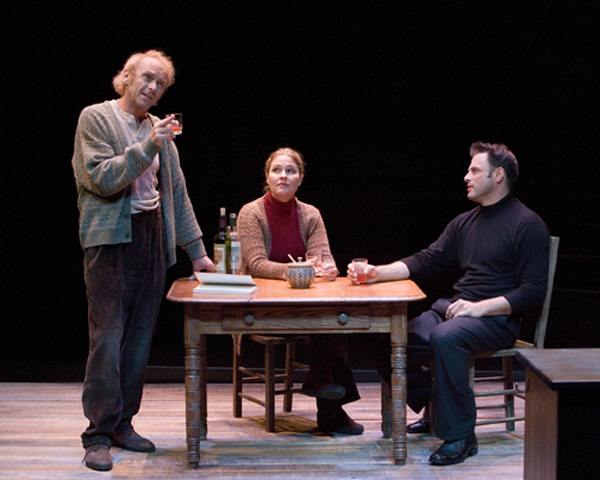
Sight Unseen reflects on 'Jewish' writers
By Gail Feinstein Forman
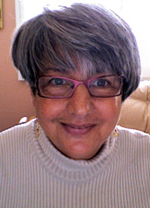 SAN DIEGO—When the playwright Donald Margulies was asked during an interview with theater critic Irene Backalenick if he considered himself an ethnic (Jewish) writer, Margulies replied that he thinks of himself “as a writer foremost”. “I believe that writers have to tell the truth as they know it,” and his work is Jewish “when the story demands it.” SAN DIEGO—When the playwright Donald Margulies was asked during an interview with theater critic Irene Backalenick if he considered himself an ethnic (Jewish) writer, Margulies replied that he thinks of himself “as a writer foremost”. “I believe that writers have to tell the truth as they know it,” and his work is Jewish “when the story demands it.”
A similarly ambiguous approach to art-particularly Jewish art -is exemplified by Jonathan Waxman, the protagonist in the Margulies play, Sight Unseen, currently playing at the Globe’s Arena Theater in the neighboring San Diego Museum of Art.
Waxman is a well-known and widely acclaimed painter, a Jewish artist on a quest to put his soul at rest. In perpetual conflict with his Jewishness and desire for assimilation, he straddles both worlds and lives in neither. For seemingly shock value, Waxman’s paintings yield controversial social commentary. In his famous painting Waltpurgnisnacht an interracial couple is making love or the woman is being raped-we’re not sure which- in a Jewish cemetery.
His paintings sell for thousands of dollars and he has a “waiting list” for pictures he hasn’t even painted yet-buyers for paintings “sight unseen.” He’s doing very well financially, has a non-Jewish wife and a baby on the way. So what’s missing?
Waxman is scheduled to open his first European exhibit at a gallery in London four days after his father died. His brother will sit “shiva,” but not Jonathan—he says he has been sitting “shiva” already for many years. But surprisingly to himself, his father’s death hits him hard. He has no one to shock anymore, he says. He’s rootless and unmoored.
To try to gain a sense of balance, he contacts his old lover and muse who now lives about 45 minutes outside of London. He thinks that perhaps he could recapture some of the vibrancy of spirit they shared in their early college days together. Perhaps asking her to forgive him for breaking up with her might help him to ameliorate his ever-present psychic pain and find meaning in the present.
We meet the three lead characters in the first scene when Jonathan arrives at Patricia’s house. Patricia is now married to Nick who is an archaeologist. We learn that Patricia has kept the memory of the Jonathan affair alive and that is has fueled her past and present life. Unbeknownst to Jonathan, the first painting he ever did, a nude of Patricia, now hangs above the mantle of Patricia and Nick’s home.
Patricia reveals that she married Nick because she had nowhere else to go after school ended for her in England. She didn’t really love him, but adapted to her life and struggles in a frigid climate with few resources. She carries on her life at a subsbsistence level- fueled by the unmet expectations of a relationship that had never been destined for a future.
Nick carries a morbid fascination about Jonathan—sizing him up for his physical stature, listening carefully to his words, knowing full well that his wife maintains her unrealistic fantasy about Jonathan that overshadows their marriage. He is at first coolly polite, and then seething with anger. When Patricia invites Jonathan to spend the night at their house, she asks her husband Nick if she and Nick could sleep downstairs and let Jonathan sleep in their bed. He agrees reluctantly but then says, “He already lives there.”
The scenes jump from the past to present out of sequence with few threads to tie it all together. Two scenes are dedicated to an interview with a German art critic that seems completely out of context. The interviewer asks Jonathan questions that may or may not be taken as anti-Semitic. She attributes all his work to the fact that he is Jewish. She asks him to “reconcile the success of his work with its rather bleak subject matter.” She also says that his representation of middle-class domesticity “is obviously Jewish.”
It is not clear who is baiting whom but these questions give Jonathan an opportunity to opine into a paranoid rant about the ways Jews have been treated throughout the ages. On a personal note, he exclaims, “To say that the subjects of my paintings are Jewish subjects because a Jew happened to paint them, that’s totally absurd.” And then the scene is over. No discussion of this encounter appears elsewhere in the play. And one has to ask of all the art critics in the world who might want to interview Waxman, why choose one who is German?
Margulies wrote the play in 1992 and parts of it seem very dated. His take on "miscegenation" had been effectively and controversially replaced a few years ago by a New Yorker cover of a Hasidic Jew kissing a black woman.
The conflict between Jonathan’s father and himself is derivative of previous Jewish plays, such as Herb Gardner’s Conversations with my Father. However in Gardner’s play, each scene builds dramatic tension towards a resolution. In Margulies' play, a resolution is never reached. Also the relationship with his non-Jewish lover had lines easily taken from recent sit-coms with this core relationship of Jewish male and non-Jewish female.
In fact, there may be two plays in Sight Unseen. One storyline follows the ménage a trios and their fractured lives. Lyrical passages delivered by Jonathan and Nick on the nature of art and it’s historical meaning create an additional storyline regarding the place of art in society and the artist’s responsibility vis a vis his or her audience
In the Old Globe production, the three lead characters give finely tuned and nuanced performances. You know these people and have visited with them before. As the director of Cygnet’s recent play Yellowman, Esther Emery has deeply delved into the psychic scars of characters and here again she culls the best of these performers and makes their hopes, dreams and agonies palpable.
Anthony Crane plays Jonathan as quintessential New York Jew, with some softening around the edges. He’s hyper and flapping. He’s depressed and weary- but not so much. In the first act, he earns our sympathy. We feel for the loss of his father and see that he’s searching and reaching out for more meaning.
In the second act, he turns a new face as a materialistic, thoughtless egotist, and we wonder why he gives himself such a nod to destroy other people’s lives with his visit to Patricia.
But even though his words speak to his arrogance, there’s a small-boy innocence about him, which makes you surprised at his emotional turn-around. He’s more comfortable playing “nice” than the rogue he turns out to be.
Kelly McAndrew is Patricia, and is very convincing in her roller coaster role as former lover, now new wife of another man. At times her heart is on her sleeve and despair creeps into her face and movements. There’s also a hint of unfounded optimism then defeat. As a sexual aggressor with Jonathan in the early years, she slinks across the stage with a determination to seduce in the most mannerly of ways.
Don Choularton gives a commanding performance as Nick whose requirements demand a range of emotions from disdain to genuine hate, as well as exemplifying the love he so longingly feels and wishes was returned from his wife. It’s raw, biting, and satirical at times. He changes methodically, step by step and brings the audience along through his every emotion.
The big weakness in this cast of four is the German critic. Her speech with heavily accented English was nearly unintelligible. In the interview scenes that didn’t make sense anyway, not being able to understand her made this part of the play irrelevant.
Margulies has been in the theater scene for the past thirty years. Sight Unseen won the coveted Obie award for Best Play and he was given a Pulitzer for his play Dinner with Friends.
He says, “My parents didn’t go to synagogue. They went to Broadway.” He indeed mentions his connection with Herb Gardner, as the first play he ever saw, at age nine, was Gardner’s A Thousand Clowns, and that was his introduction to playwriting.
Those Old Globe patrons with concerns about the new venue at the Copley Auditorium at SDMA need not worry. It is laid out very similarly to the Cassius Carter but actually with more accessibility. Scene changes were seamless, acoustics were very good, and the stage set simple and appropriate. It never felt “second Class.”
Despite the internal failings of the play itself, I was engaged throughout the evening and found the production entertaining. At times the dialogue crackles with wit, irony, and humor. And the three lead performers all rate an A+.
Though the themes may be overwrought, the play still has something to say about the place in society of Jewish artistic endeavors, as well as positing the age-old Talmudic queries that asks, “Can you separate the artist from the work? And what exactly is Jewish art?
Though the play may not provide all the answers, it will definitely stir your interest in the questions!
The play continues at the Old Globe arena theater through September 7, 2008. Call (619)
238-0043 for tickets.
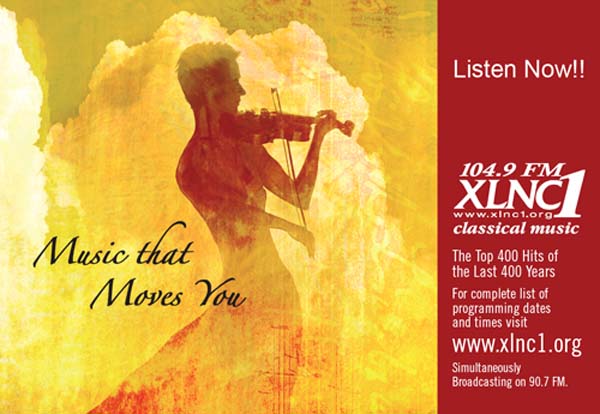

ADVENTURES IN SAN DIEGO JEWISH HISTORY
Editor's Note: To create a permanent and accessible archive, we are reprinting news articles that appeared in back issues of various San Diego Jewish newspapers. You may access an index of the headlines of those articles by clicking here. You may also use the Google search program on our home page or on the headline index page to search for keywords or names.
Jr. Pioneer Women
From Southwestern Jewish Press, November 14, 2008, page 5
Sunday evening, October 30th, marked the installation of new officers for the Jr. Pioneer Women. The beautiful candle light ceremony, which was in charge of social chairman Mrs. Rose Sloane and her central committee, was held in Temple Center, 3rd and Laurel Streets.
Elected to serve this organization for the coming year are MrsTheodore Herrmann, president; Mrs. Aubrey Shulkind, 1st Vice President; Mrs. Rose Sloane, 2nd vice—president; Mrs. Sydney Segal, treasurer; Mrs. Bernard Godes, corresponding secretary, and Mrs. Milton Merkin, recording secretary.
This Jr. Pioneer Women’s organization whose sole function is to serve the needs of Israel invite new and prospective members to attend the next meeting on Tuesday evening, November 8th at Temple Center at 8:00 p.m. Refreshments will be served at the close of the meeting.
Beth Jacob Cong Elects New Officers
From Southwestern Jewish Press, November 14, 2008, page 5
A new year has started at Beth Jacob Congregation when at the meeting held in October new officers were elected to serve and guide the Congregation for the coming year.
Chosen to lead the group for the third year is Mr. Abraham Abramson, president. Assistin him are the following: vice presidents, Sandor Goldberger and Morrie S.Kraus; recording secretary, Jerry Aronoff; Financial secretary Morris Penn; treasurer, SimonGlaser; 1st Gabbai, Joseph Gelman and 2nd Gabbai I. Lebb.
A twenty man Board of Directors was elected, the members of which are J. Aronoff, E. Also, S. Bassin, H. Barad, S. Briskman, I. Gordon, T. Garber, F. Sugarman, D. Hurwitiz, S. Komins, P. Mollick, Dr. J. Lippitt, A. Olf, Dr. W. Ornstein, Dr. A.P. Nasatir, S. Solomon, S. Weiss, L. Zwiebel, Wm Schwartz and H.R. Weitzman.
Congregation plans for the coming year are centered around the building of the new Synagogue and Center with ground breaking ceremonies to be held in the very near future.
Regular monthly meetings are held the first Tuesday of each month, and a cordial invitation is extended by Pres. Abramson to any newcomers in the community to attend any meeting and get acquainted with this modern Orthodox group.
Hadassah Annual Convention to be November 13th
From Southwestern Jewish Press, November 14, 2008, page 5
The National Annual Convention of Hadassah will be opened at the Hotel Fairmount, San Francisco, on Sunday, November 13th, and will continue until Wednesday, November 16th. Marie Berg, President, announces that a large group of San Diegans will attend. Mrs. Berg will give a report on the convention upon her return.
Among those who have accepted an invitation to speak are Rabbi Max Nussbaum of Los Angeles and Rabbi Roland Gittlesohn, who was stationed here as a Chaplain in the Marine Corps.
A special Hadassah train will leave Los Angeles on Sunday morning at 8:15 a.m. arriving in San Francisco in time for the opening session, a banquet at the San Francisco Opera House. Reservations can be made by contacting Mrs. Seymour Rabin, at Bayview 2-1360.
{Return to top}


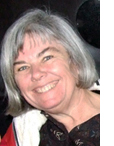 Nancy Harrison Nancy Harrison
cruise & tour specialist
(619) 265-0808

SAN DIEGO JEWISH WORLD THE WEEK IN REVIEW
by Ira Sharkansky in JerusalemPeace proponents, members of Kol Acher, gather on both sides of Gaza border by Ulla Hadar in Kibbutz Kfar Aza, IsraelHiding in Holland from the Nazi killers by Donald H. Harrison in San DiegoNot 'Mission' Bay but perhaps 'Synagogue' Bay? by Donald H. Harrison in San DiegoJCC Maccabi Games exemplified ahavat chinam, selfless love, uniting all Jews by Rabbi Leonard Rosenthal in San DiegoHow the teams fared at JCC Maccabi Games, compiled by the Lawrence Family JCC
A bissel sports trivia with Bruce Lowitt in Clearwater, FloridaDonovan’s Steak and Chop House a prime reason to visit historic Gaslamp Quarter by Lynne Thrope in San DiegoNovember 14, 1949: JDC-USNA Hold Joint Meeting
—November 14, 1949:November 14, 1949:November 14, 1949: Personals {Rabbi Baruch Stern}November 14, 1949 Temple Beth Israel Sisterhood
by Donald H. Harrison in San Diego International by Judy Lash Balint in Jerusalemby Dorothea Shefer-Vanson in Mevasseret Zion, Israel by Gary Rotto in San Diegoa serialized novel by Sheila OrysiekNovember 14, 1949:November 14, 1949:November 14, 1949November 14, 1949November 14, 1949:
2008 JCC Maccabi GamesWith all those medals, will Israelis be able to keep their luggage under 50 pounds? by Donald H. Harrison in San Diego
Where do you take JCC Maccabi athletes in San Diego County on 'host family night?' by Gary Rotto in San Diego
Girl, 11, aims to be Maccabi 'pin queen' by Donald H. Harrison in San Diego
Basketball, 'Jewish geography' and socializing all part of Maccabi games by Gary Rotto in San Diego
International
The clowns who make policy in Palestine and the U.S. embarrass both governments by Ira Sharkansky in Jerusalem
U.S. following nonsensical policy in Gaza by Shoshana Bryen in Washington, D.C.
Arts
Thursdays with the Songs of Hal Wingard:
—#54, I Wear A Hat
—#109, I Won't Put Up With You
—#283, I Hoped That You Would Love Me
Adventures in San Diego Jewish History
—November 14, 1949: Vote Yes! On Library Bond Issue
—November 14, 1949: Rev. Grauel and Mme Oppert To Speak For United Jewish Fund
—November 14, 1949: Community Chest Campaign On
—November 14, 1949: Take It Away by Lou and Ray Solomon
International
Abbas' refusal to accept refugees from Gaza underscores West Bank's separateness by Shoshana Bryen in Washington, D.C.
New Israel Baseball League president vows to pay its debts and forge a 12-team future by Donald H. Harrison in San Diego
Arts
Jews are also the 'people of the comic book' by Joseph Laredo in San Diego
Lifestyles
Jewish-Korean wedding provides blend of two cultures with two distinct ceremonies by Eileen Wingard in Malibu, California
Adventures in San Diego Jewish History
—October 1949:San Diego B’nai B’rith Women
—October 1949: Council to Celebrate National Council Day
—October 1949:Ladies Auxiliary J.W. V. Post No. 185
—October 1949: Tifereth Israel Sisterhood
Sports/ 2008 JCC Maccabi Games
'Why Volleyball?' nets many responses by Danielle Potiker and Daniela Federman in San Diego
U.S. Jewish athletes ready for Beijing Olympics in four different sports by "SD Pipeline" staff in San Diego
San Diego
Father transforms his grief into helping thousands in the name of his daughter by Donald H. Harrison in San Diego
Arts
The Receptionist will soon lure you into office comedy/drama at Cygnet Theatre by Carol Davis in San Diego
Pen: A writing implement, or a prison? by Cynthia Citron in Beverly Hills, California
Lifestyles
Two Jewish women win acclaim for their restaurants: Lehn Goetz and Tracy Borkum by Lynne Thrope in San Diego
Adventures in San Diego Jewish History
—October 1949: J.C.R.A
—October 1949: Jolly 16 Celebrates 35 Years of Service
—October 1949:Senior Pioneer Women
—October 1949: Birdie Stodel Chapter No. 92 B’nai B’rith
by Ulla Hadar in Kibbutz Ruhama, Israel by Joel A. Moskowitz, M.D. by Sheila Orysiek in San DiegoOctober 1949:October 1949:October 1949October 1949:
Link to previous editions
< BACK TO TOP
|
|

